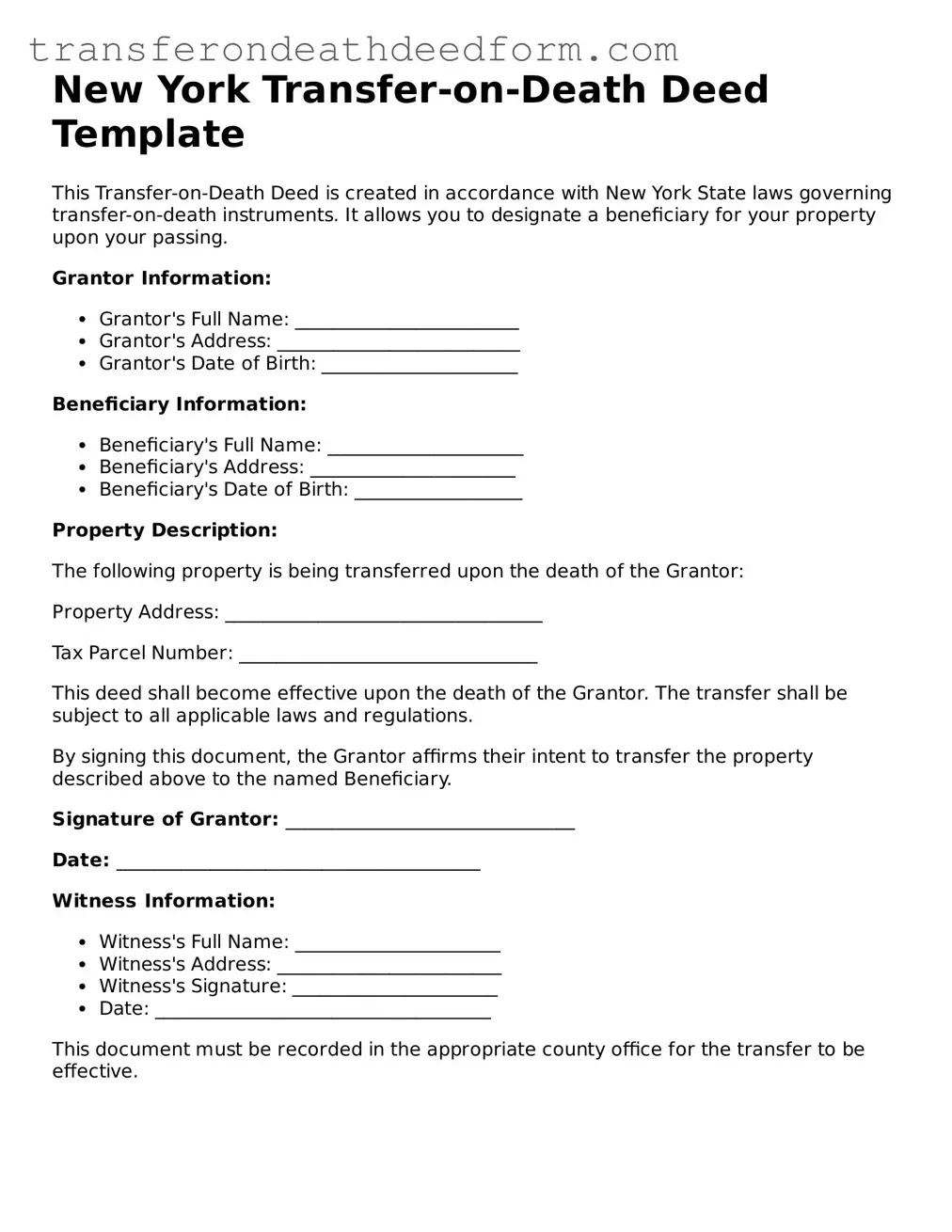New York Transfer-on-Death Deed Template
This Transfer-on-Death Deed is created in accordance with New York State laws governing transfer-on-death instruments. It allows you to designate a beneficiary for your property upon your passing.
Grantor Information:
- Grantor's Full Name: ________________________
- Grantor's Address: __________________________
- Grantor's Date of Birth: _____________________
Beneficiary Information:
- Beneficiary's Full Name: _____________________
- Beneficiary's Address: ______________________
- Beneficiary's Date of Birth: __________________
Property Description:
The following property is being transferred upon the death of the Grantor:
Property Address: __________________________________
Tax Parcel Number: ________________________________
This deed shall become effective upon the death of the Grantor. The transfer shall be subject to all applicable laws and regulations.
By signing this document, the Grantor affirms their intent to transfer the property described above to the named Beneficiary.
Signature of Grantor: _______________________________
Date: _______________________________________
Witness Information:
- Witness's Full Name: ______________________
- Witness's Address: ________________________
- Witness's Signature: ______________________
- Date: ____________________________________
This document must be recorded in the appropriate county office for the transfer to be effective.
